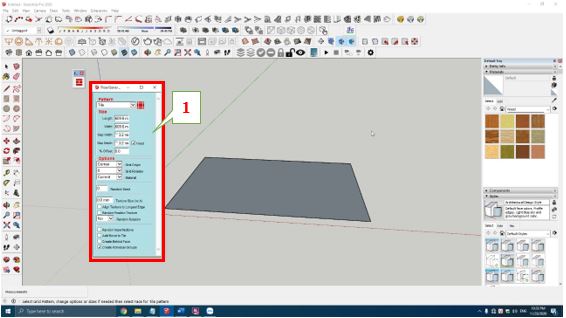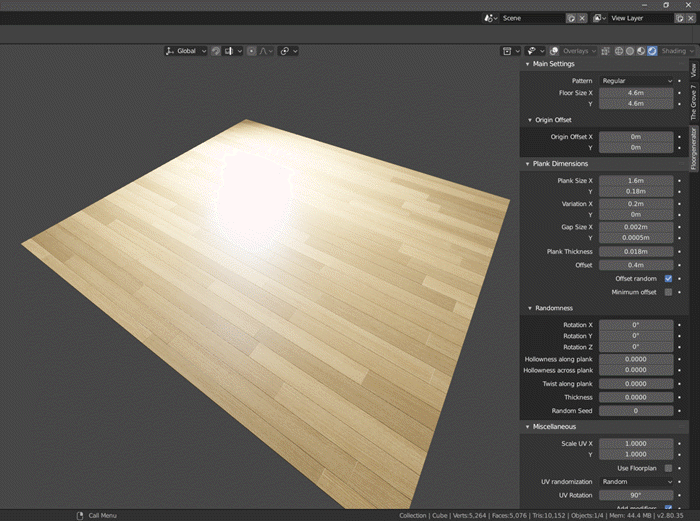

Floor Generator will randomly assign these hexagon textures to the boards at render time. Create a new VRayMtl and plug the Multitexture map into the diffuse slot.Īdjust your reflection and glossiness parameters for the wood material. Make sure these new textures are visually distinct from each other. Cut out and save 7 different areas of the wooden texture in the shape of a hexagon. You can do this by Ctrl clicking the hexagon image to select the shape, then with the wood texture active, pressing the mask button. Use the hexagon image as a mask over the wooden texture. Import the wood and hexagon images into Photoshop.
#SKETCHUP FLOOR GENERATOR DOWNLOAD#
Also download a simple hexagon png image from Google which will help us in cutting out our textures. The 3 main settings for defining your hexagon floor are RadiusExtrude and Bevel. Download the floor sample here - converted to mesh.Ĭreate a rectangular spline for the floor and add the floor generator modifier to it. The Floor Generator plugin gives us the option to add a lot of variation to the floor boards using these common controls. Product Links in the description are typically affiliate links that let you help support the channel at no extra cost.One other benefit to the paid version is the ability to create vertical patterns on walls as well. It seems like you have to be careful how much geometry you create because it could slow down your model, but it seems like this could be super interesting for rendering and other applications.ĭisclaimers: all opinions are my own, sponsors are acknowledged.


Overall, this seems to be a VERY interesting extension for both floor and wall generation in SketchUp. I’m not 100% sure what the create behind face option does. This also includes the ability to create each object as an individual group. You can add bevels and random imperfections to anything you create to make it look more realistic as well. Theoretically you can adjust the size of the textures, though I haven’t had a lot of success getting that to work, but you can adjust the rotations of your textures as well as allowing you the ability to randomize the rotation of your textures. You can also adjust your textures within this extension. This is especially useful because you can use it to apply random materials to each object, meaning there’s no tiling to your textures.

You can adjust your material either by applying the current active material in SketchUp to your model, applying random colors, or by selecting random textures from a custom folder. You can also adjust the orientation of the items that you’ve selected by both 45 and 90 degrees. One item of particular note is the ability to generate clapboard, or building siding on vertical faces.Īll the floor types have editable input, including being able to set length, width, spacing between objects, offsets, and more. This means that you can create tiles that actually have thickness, along with Brick, wood floors, and many other options. This extension allows you to generate flooring as actual geometry in your models. Where can you get it? You can download it from the SketchUcation Plugin Store by visiting the link in the notes below! This week’s extension, chosen by my Patreon supporters, is floor generator. This week, we’re going to review an extension that allows you to generate flooring as actual geometry in your models. MY CURRENT FAVORITE SKETCHUP PLUGINS AND EXTENSIONS In today's video, we check out a SketchUp plugin that allows you to quickly create flooring, tile, brick, siding and more quickly and easily!



 0 kommentar(er)
0 kommentar(er)
